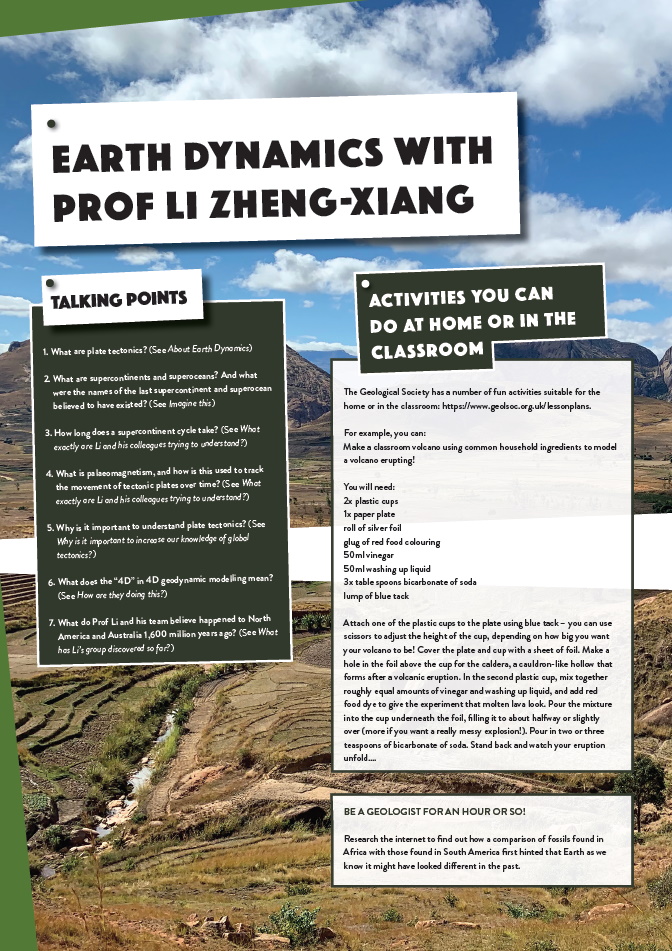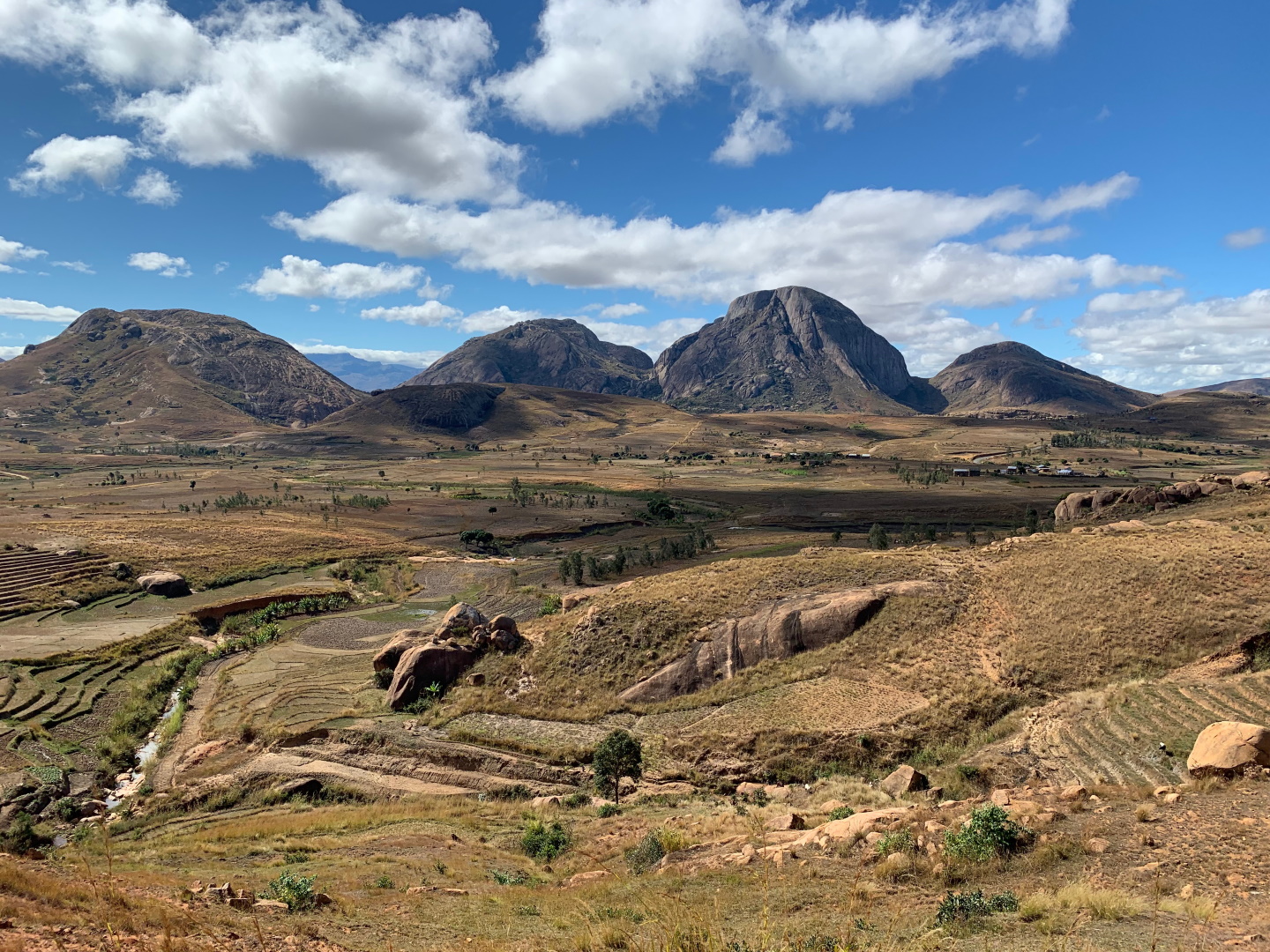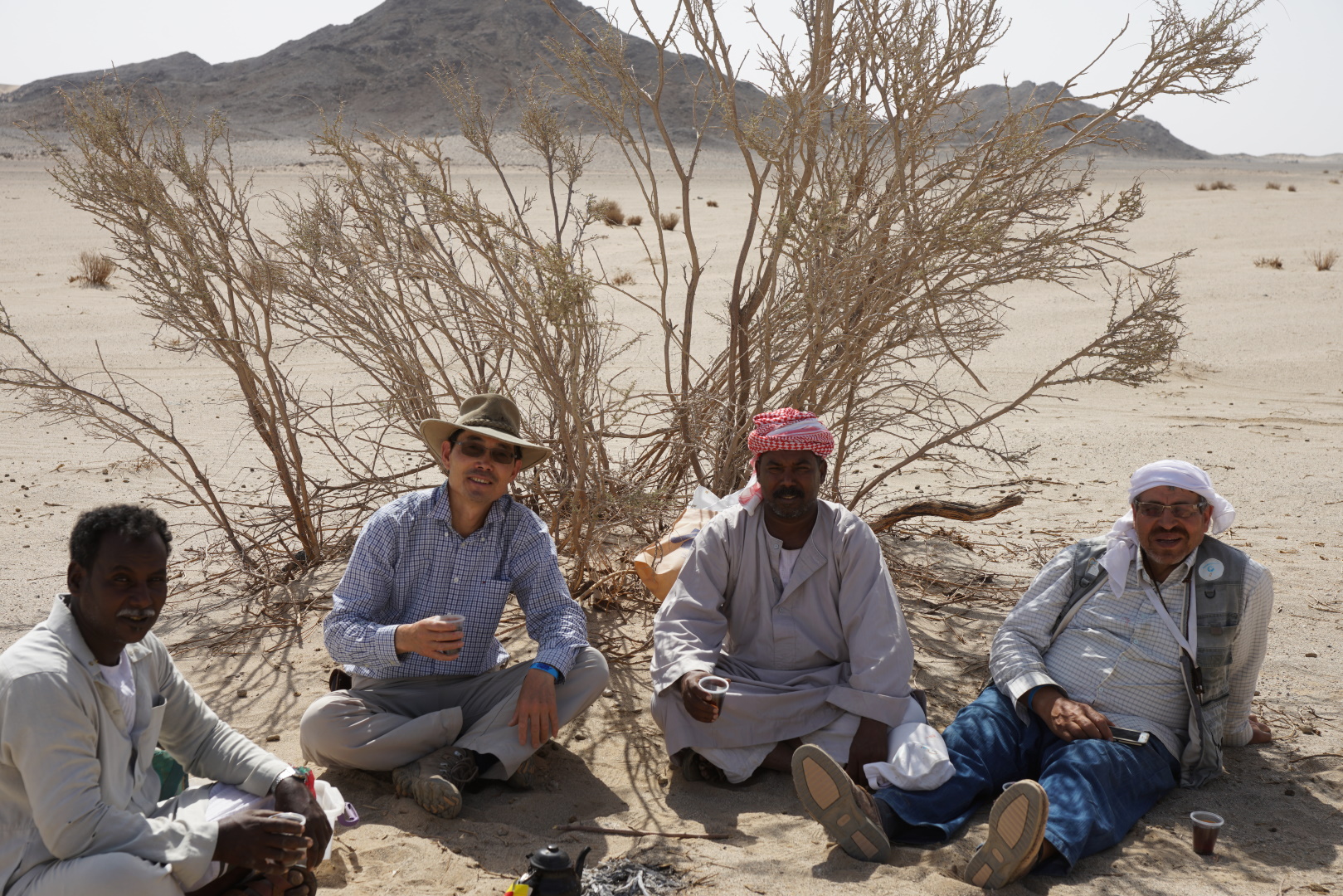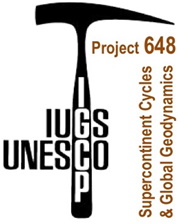Movers and shakers: using supercomputers to understand how supercontinents form and drift apart
Professor Zheng-Xiang Li, of Curtin University in Western Australia, has combined his love of travel with a life-long interest in nature to study the processes that shape the Earth. His research group use supercomputers to model the changes to our planet over the past two billion years, in a process called 4D geodynamic modelling
Professor Zheng-Xiang Li, based at Curtin University’s School of Earth and Planetary Sciences in Australia, has spent his career trying to understand the forces that shape our planet. Li is a leader in the field of Earth dynamics (a branch of geophysics), and he and his team have been working on a project that aims to understand how the Earth works. They are doing this by studying plate tectonics – a scientific theory that describes the surface of the Earth as an outer shell divided into plates – and investigating how these tectonic plates interact with deeper Earth over time.
WHAT EXACTLY ARE LI AND HIS COLLEAGUES TRYING TO UNDERSTAND?
Our planet formed about 4.5 billion years ago; Li’s group is focusing on the past 2 billion years. Because we cannot see directly into the deeper Earth and study how things work down there, it has been difficult for scientists to figure out how tectonic plates work. Li’s group aims to understand how the Earth has evolved over the past 2 billion years through palaeomagnetism, a branch of geophysics that studies magnetism in rocks.
As magma or lava cool (or when fine sediments settle at the bottom of seas and lakes), tiny iron-bearing minerals in the rocks or sediments align with the Earth’s magnetic field. Once the rocks are solidified, these minerals become “locked in” and act like tiny magnets or compasses. By studying these magnetic minerals, or needles, Li and his team are able to track how continents have moved over time and look for patterns, which they can then compare to what they know about Earth’s internal geometry today.
The researchers are also modelling the forces that drive the formation and breakup of supercontinents. Every 500-700 million years, 75% or more of the Earth’s landmasses join together to form a single mass known as a supercontinent. One of the key questions that Li and his team would like to answer is how many supercontinents have formed over Earth’s history.
HOW DO THEY INVESTIGATE HOW SUPERCONTINENTS FORMED MILLIONS OF YEARS AGO?
“New geophysical imaging techniques allow us to gain increasingly clear images of what the deep Earth looks like,” says Li, “and powerful supercomputers let us simulate how Earth’s tectonic plates interact with the deeper Earth with increasing resolution, and further back in time.”
Indeed, cutting-edge geophysical techniques, which allow the precise dating of geological events and the analysis of the physical and chemical nature of rock samples, have enabled scientists to gather a wealth of data from around the world. Li’s group has been feeding this information into supercomputers and using tools, including artificial intelligence (AI), to mine this data and look for patterns. One method of computer simulation is known as 4D geodynamic modelling, which uses physics, chemistry, mathematics and geoscience knowledge to model the geographical distribution of rocks in three dimensions (3D) – length, width and depth –, then work out how this distribution changes over time. These time changes are known as the fourth dimension (4D).
WHAT HAS LI’S GROUP DISCOVERED SO FAR?
Working with other research teams from different countries, Li’s team has discovered a piece of landmass from North America that stuck to, and subsequently travelled with, Australia about 1.6 billion years ago, when both countries were part of the same supercontinent known as Nuna.
The researchers have also suggested that there might be a “superocean cycle” – which describes the formation and dissipation of huge oceans. This superocean cycle is believed to take place over about 1.2 billion years compared to the supercontinent cycle, which takes roughly 600 million years to complete.
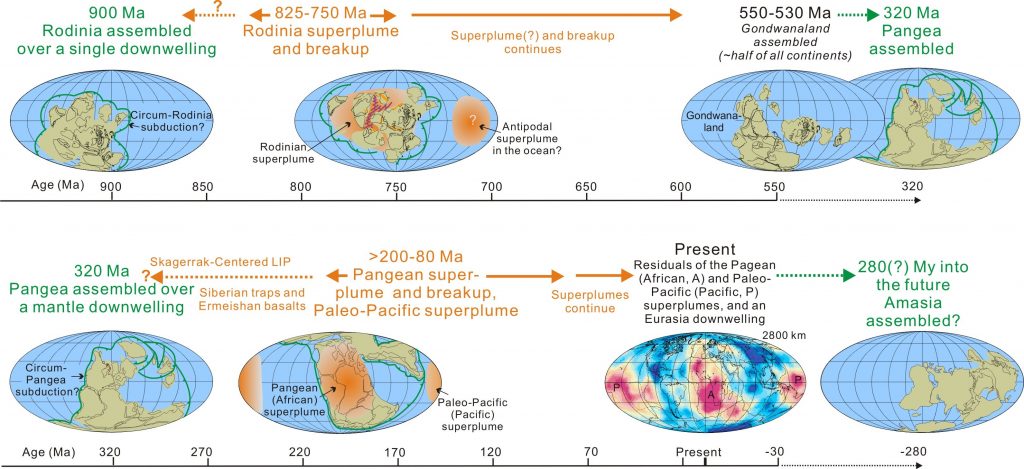
This image shows a proposed supercontinent–superplume coupling since 900 million years ago (Ma). This coupling started at least since 2000 Ma. A superplume is a large body of hot rock within deep Earth, some of which is convected to the Earth’s surface. Can you find the supercontinents Rodinia and Pangea? It is believed that we are currently halfway through the formation of another supercontinent known as Amasia, but scientists have different views on what Amasia will look like and where it will centre.
WHY IS LI WORKING WITH OTHER RESEARCH TEAMS FROM ALL OVER THE WORLD?
As Li explains, “The scope of this project is so large that it is crucial to work with a wide range of specialists with knowledge covering all key disciplines and geographic locations.” As such, Li is working with key partners, including Prof David Evans of Yale University, USA, who specialises in palaeomagnetism and world geology; Prof Shijie Zhong of the University of Colorado, USA, who is an expert in the digital simulation of the geodynamic system; Prof Bruce Eglington of the University of Saskatchewan, Canada, who specialises in the establishment of global geological databases that allow researchers to apply a big data approach to their studies; and Prof Dietmar Muller of the University of Sydney, Australia, who specialises in marine geophysics and led the development of the GPlates software, which enables scientists to build 3D models of global plate tectonic evolution through time.
Reference
https://doi.org/10.33424/FUTURUM30
Li takes a field trip to Madagascar.
Earth scientists like Li get to travel around the world.
Li and his team take a tea break during fieldwork in the East Desert, Egypt.
This is a geodynamic working model of coupled supercontinent and superplume events.
Professor Zheng-Xiang Li, based at Curtin University’s School of Earth and Planetary Sciences in Australia, has spent his career trying to understand the forces that shape our planet. Li is a leader in the field of Earth dynamics (a branch of geophysics), and he and his team have been working on a project that aims to understand how the Earth works. They are doing this by studying plate tectonics – a scientific theory that describes the surface of the Earth as an outer shell divided into plates – and investigating how these tectonic plates interact with deeper Earth over time.
WHAT EXACTLY ARE LI AND HIS COLLEAGUES TRYING TO UNDERSTAND?
Our planet formed about 4.5 billion years ago; Li’s group is focusing on the past 2 billion years. Because we cannot see directly into the deeper Earth and study how things work down there, it has been difficult for scientists to figure out how tectonic plates work. Li’s group aims to understand how the Earth has evolved over the past 2 billion years through palaeomagnetism, a branch of geophysics that studies magnetism in rocks.
As magma or lava cool (or when fine sediments settle at the bottom of seas and lakes), tiny iron-bearing minerals in the rocks or sediments align with the Earth’s magnetic field. Once the rocks are solidified, these minerals become “locked in” and act like tiny magnets or compasses. By studying these magnetic minerals, or needles, Li and his team are able to track how continents have moved over time and look for patterns, which they can then compare to what they know about Earth’s internal geometry today.
The researchers are also modelling the forces that drive the formation and breakup of supercontinents. Every 500-700 million years, 75% or more of the Earth’s landmasses join together to form a single mass known as a supercontinent. One of the key questions that Li and his team would like to answer is how many supercontinents have formed over Earth’s history.
HOW DO THEY INVESTIGATE HOW SUPERCONTINENTS FORMED MILLIONS OF YEARS AGO?
“New geophysical imaging techniques allow us to gain increasingly clear images of what the deep Earth looks like,” says Li, “and powerful supercomputers let us simulate how Earth’s tectonic plates interact with the deeper Earth with increasing resolution, and further back in time.”
Indeed, cutting-edge geophysical techniques, which allow the precise dating of geological events and the analysis of the physical and chemical nature of rock samples, have enabled scientists to gather a wealth of data from around the world. Li’s group has been feeding this information into supercomputers and using tools, including artificial intelligence (AI), to mine this data and look for patterns. One method of computer simulation is known as 4D geodynamic modelling, which uses physics, chemistry, mathematics and geoscience knowledge to model the geographical distribution of rocks in three dimensions (3D) – length, width and depth –, then work out how this distribution changes over time. These time changes are known as the fourth dimension (4D).
WHAT HAS LI’S GROUP DISCOVERED SO FAR?
Working with other research teams from different countries, Li’s team has discovered a piece of landmass from North America that stuck to, and subsequently travelled with, Australia about 1.6 billion years ago, when both countries were part of the same supercontinent known as Nuna.
The researchers have also suggested that there might be a “superocean cycle” – which describes the formation and dissipation of huge oceans. This superocean cycle is believed to take place over about 1.2 billion years compared to the supercontinent cycle, which takes roughly 600 million years to complete.

This image shows a proposed supercontinent–superplume coupling since 900 million years ago (Ma). This coupling started at least since 2000 Ma. A superplume is a large body of hot rock within deep Earth, some of which is convected to the Earth’s surface. Can you find the supercontinents Rodinia and Pangea? It is believed that we are currently halfway through the formation of another supercontinent known as Amasia, but scientists have different views on what Amasia will look like and where it will centre.
WHY IS LI WORKING WITH OTHER RESEARCH TEAMS FROM ALL OVER THE WORLD?
As Li explains, “The scope of this project is so large that it is crucial to work with a wide range of specialists with knowledge covering all key disciplines and geographic locations.” As such, Li is working with key partners, including Prof David Evans of Yale University, USA, who specialises in palaeomagnetism and world geology; Prof Shijie Zhong of the University of Colorado, USA, who is an expert in the digital simulation of the geodynamic system; Prof Bruce Eglington of the University of Saskatchewan, Canada, who specialises in the establishment of global geological databases that allow researchers to apply a big data approach to their studies; and Prof Dietmar Muller of the University of Sydney, Australia, who specialises in marine geophysics and led the development of the GPlates software, which enables scientists to build 3D models of global plate tectonic evolution through time.
WHAT ARE THE NEXT STEPS FOR LI’S RESEARCH PROJECT?
Research can be a slow process. In fact, there is even a term for this: “slow science”. This is because it can take years to gather the evidence needed to prove or disprove theories. Indeed, Li reckons it will take at least another 20 years before he can provide more definitive answers to some of the science questions he is hoping to answer. But slow science does not translate into “boring science”! Quite the opposite, as Li says: “My team is evolving as the project evolves, with some younger members moving to other institutions around the world to develop their independent careers, and new members joining us with support from new funding sources. All of us, along with our other collaborators, are continuing to pursue this exciting research field as an expanding international network.”
WHY IS IT IMPORTANT TO INCREASE OUR KNOWLEDGE OF GLOBAL TECTONICS?
“Earth’s tectonic evolution has impacted the formation of the atmosphere, which we breath, and the behaviour of the Earth’s geomagnetic field, which protects the atmosphere, the hydrosphere and all life on Earth – like a giant shield – from the bombardment of the Sun’s strongly charged particles, known as the solar wind,” explains Li. By investigating the evolution of tectonic plates, Li and his colleagues are furthering our understanding of their effects on landscapes, soils, minerals and fossil fuels – all of which are vital to society in so many ways, from agriculture to energy supply and product development. Moreover, knowledge about tectonics is essential if we are to fully understand and survive geohazards such as earthquakes, volcanos and tsunamis. So, while curiosity about how planet Earth really works might get you started in a career in geology or geophysics, your studies in Earth dynamics will underpin life as we know it.
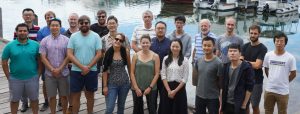 PROFESSOR ZHENG-XIANG LI
PROFESSOR ZHENG-XIANG LI
John Curtin Distinguished Professor
School of Earth and Planetary Sciences, Curtin University, Australia.
FIELD OF RESEARCH: Earth Dynamics
RESEARCH PROJECT: Li and his team are using cutting-edge techniques to create computer simulations of how plate tectonics have reshaped our planet over the past 2 billion years.
FUNDER: Australian Research Council
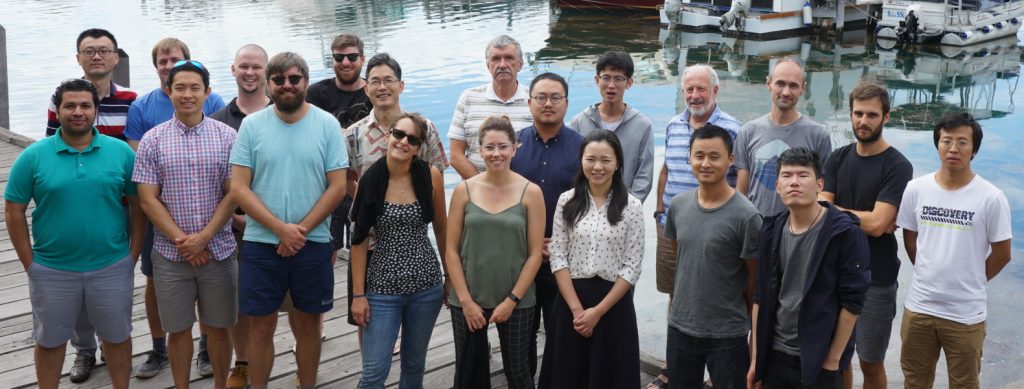 PROFESSOR ZHENG-XIANG LI
PROFESSOR ZHENG-XIANG LI
John Curtin Distinguished Professor
School of Earth and Planetary Sciences, Curtin University, Australia.
FIELD OF RESEARCH: Earth Dynamics
RESEARCH PROJECT: Li and his team are using cutting-edge techniques to create computer simulations of how plate tectonics have reshaped our planet over the past 2 billion years.
FUNDER: Australian Research Council
ABOUT EARTH DYNAMICS
Planet Earth is a sphere, composed of several, distinct layers. The outermost layer is known as the crust and is made of solid rock, between 8 and 50km thick. This crust, together with the topmost layer of mantle under it, forms a mosaic of rigid plates that float upon a mushy layer of the mantle, known as the asthenosphere. Over time, these plates move around the globe.
WHAT EFFECT DOES THIS HAVE ON OUR PLANET?
Everything that we see on Earth, from the landmasses that make up the continents and islands, to the oceans and seas, rests upon these plates. Over time the position of these continents and oceans changes. Although these plates move extremely slowly – only a few centimetres per year – over tens of millions of years this movement adds up, meaning continents can shift thousands of kilometres, albeit over a long period of time.
Periodically, many of the landmasses join together to form a supercontinent, before breaking apart again. This supercontinent cycle takes place over 500 to 700 million years.
HOW ELSE HAVE THESE MOVING PLATES AFFECTED OUR PLANET?
When plates collide, new mountain ranges might form between them; when they move apart, new oceans may appear. In some areas, hot, molten rock from deep below bursts through in a volcanic eruption. Scientists can map these eruptions and use the information to probe deeper into the Earth.
CAN WE SEE EVIDENCE OF THESE PLATES MOVING TODAY?
Yes. Where the plates rub up against each other, a fault line will have formed. Sometimes the plates stick and forces build up – eventually the force is released in a violent jerk, causing an earthquake.
WHY SHOULD STUDENTS STUDY EARTH DYNAMICS?
The study of geology or geophysics can lead to a wide range of exciting and rewarding careers. Plate tectonics have an impact on the formation of our atmosphere, the Earth’s geomagnetic shield (which protects us from the solar wind – dangerous, highly charged particles emitted by the Sun) and our landscape. The rocks, minerals and fossil fuels that we rely on every day were formed through the action of plate tectonics. Scientists studying this area also aim to help us understand and survive hazards such as earthquakes, volcanoes and tsunamis.
OPPORTUNITIES IN GEOPHYSICS
• The Geological Society of Australia is a great place to find information about geology, including courses: https://www.gsa.org.au/.
• The Australia-based Geoscience Pathways website has lots of interesting resources for students who are still at school, including information about careers in this area and what to study at university: http://www.geosciencepathways.org.au.
• The Australian Geoscience Council (https://www.agc.org.au/) has lots of information, including the regular GeoEdLink newsletter aimed at educators and the public. https://www.agc.org.au/geoedlinknewsletter/.
• Careers in geology can be well paid. Entry-level positions generally start at about AUD$ 44,000 per year, averaging to over $120,000. The most experienced workers can make over $200,000.
ASK PROF ZHENG-XIANG LI
WHAT DID YOU WANT TO BE WHEN YOU WERE GROWING UP?
I grew up in China during the Cultural Revolution, when the country was going through a period of social upheaval and almost all the universities were shut. So, during my school years, I wanted to become a schoolteacher. The only other option at that time for me would have been to work in fields. Towards the end of my school years, the Cultural Revolution ended, and universities reopened. I then started dreaming of becoming a physicist!
YOU HAVE A BS DEGREE IN SEISMOLOGICAL GEOLOGY FROM PEKING UNIVERSITY. WHAT DREW YOU TO THIS SUBJECT?
I was always interested in nature but went into this subject almost by accident. However, I soon developed a love of it because of my love of travel, and the subject involves a lot of physics, too.
COULD YOU DESCRIBE A TYPICAL DAY FOR YOU AS A MEMBER OF THE EARTH DYNAMICS RESEARCH GROUP?
When not attending conferences or geological field trips, we spend much of our day reading scientific papers (finding out what’s new), acquiring and interpreting both our own and others’ results, discussing new results and exciting new ideas with colleagues, and writing these up as scientific papers, when these results and ideas are mature enough to be shared with the global science community.
WHAT DO YOU LOVE MOST ABOUT YOUR JOB?
The freedom to follow my own interests; the excitement of a brand-new discovery or idea and being able to share it with likeminded people, plus the opportunity to see remote corners of the world and experience different cultures. (See www.travelinggeologist.com)
WHAT HAS BEEN YOUR GREATEST ACHIEVEMENT TO DATE?
Developing a new understanding about how the Earth engine works, i.e. discovering the conceptual model that plate tectonics interact with mantle dynamics through coupled supercontinent-superplume cycles, and that superoceans likely outlive supercontinent cycles.
LI’S TOP TIPS
01) Have an inquisitive mind and a thirst for knowledge.
02) Follow your own interests (which can change over time).
03) Do things with passion!


